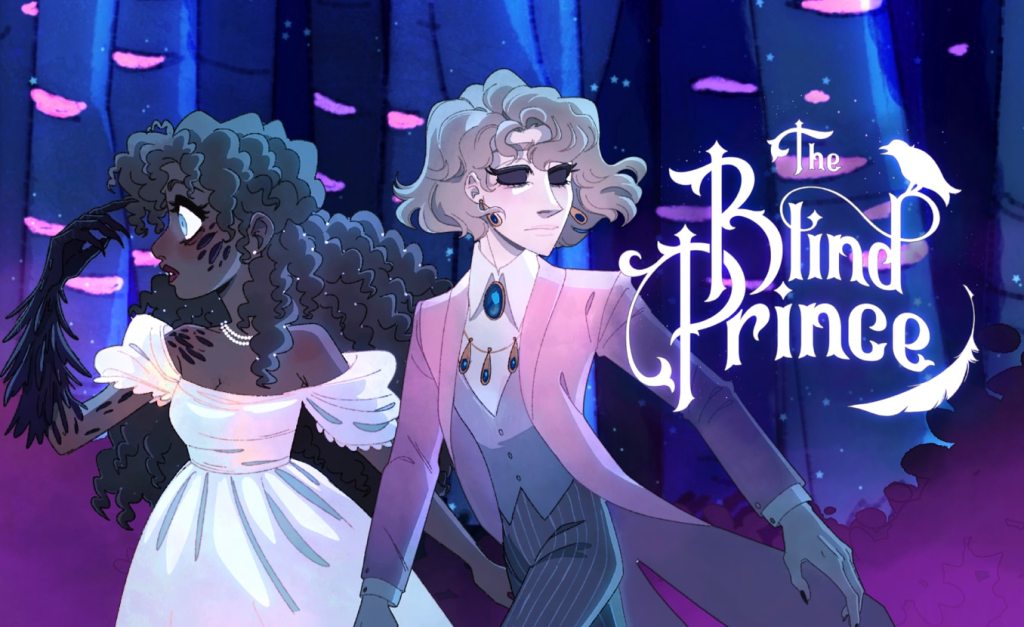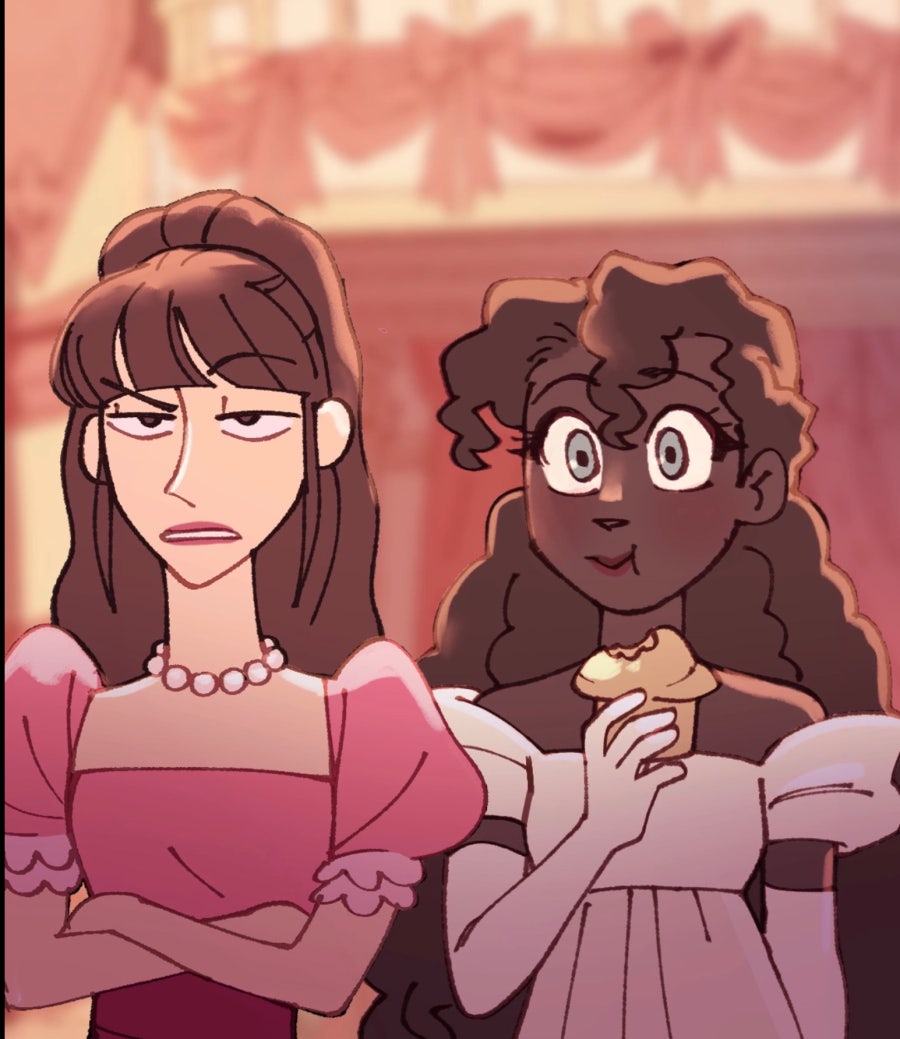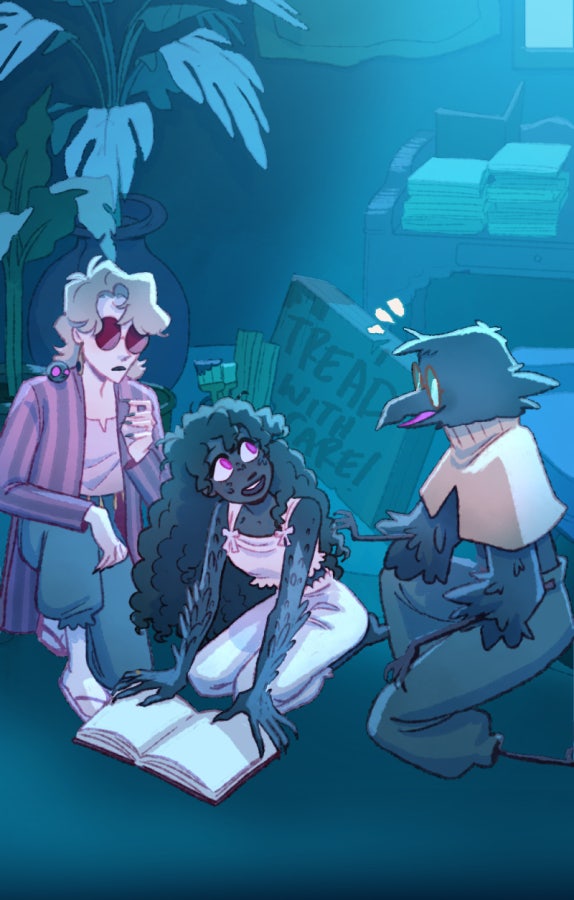
The Blind Prince is a lush, emotionally charged fantasy romance from Cozycroww that has drawn over 24 million readers. At its center is Elaine, a young woman transformed by a curse that sprouts feathers and talons across her skin and forces her into exile within a forbidding, enchanted forest. Cut off from home and human kindness, she survives on wit and stubborn compassion until fate binds her to a wounded prince stripped of sight by a parallel curse. Their uneasy alliance becomes the story’s engine: together they must navigate the forest’s dark magic, unravel courtly schemes, and confront the social stigmas that made exile possible. What begins as mutual dependence evolves into tender repair and quiet rebellion, as both characters reclaim agency, test the limits of power, and redefine what it means to belong; watch the teaser here:
Core themes
• Cursed bodies and belonging: Elaine’s feathers and talons function as lived consequences, forcing the story to reckon with public shame, exile, and the practical burdens of difference. The narrative uses her altered body to explore how stigma fractures communities, how self‑acceptance is learned in hardship, and how transformation can become the catalyst for unexpected solidarity and reclamation.
• Sight, perception, and power: The prince’s missing eyes operate on multiple levels, a literal loss that changes how he navigates the world and a potent metaphor for political myopia. The plot examines who is allowed to interpret truth, how sight and authority are conflated, and how vulnerability can recalibrate leadership into something more accountable and perceptive.
• Romance forged by necessity: Intimacy grows from mutual reliance rather than romance as spectacle; their bond is pragmatic, slowly tender, and shaped by repairs small and painful. The courtship is built on shared labor, quiet reparations, and protective acts that reveal emotional depth through everyday care and risk, not through instant chemistry.
• Family, duty, and legacy: Lineage and obligation sit at the story’s heart, turning private wounds into political currency. Family expectations dictate choices; inheritance shapes alliances; and the characters’ personal reckonings ripple outward, forcing moral reckonings that determine who inherits power, who keeps secrets, and who bears the cost of legacy.

Main characters
• Elaine: A fiercely human protagonist whose curse isolates her but also reveals a stubborn, practical resilience; she refuses to be written off as a monster and instead carves agency from confinement. Elaine survives by wit, empathy, and hard-learned skill, confronting the forest’s tangible threats and the court’s moral rot with equal determination, learning to weaponize kindness and cunning in service of survival and justice.
• The Prince: A royal undone by lost sight and shaken certainty, he must relearn authority without the usual tools of power. Deprived of visual command, he develops other perceptive strengths; acute listening, calibrated trust, and moral introspection; that complicate traditional notions of rulership. His reconstruction under duress mirrors Elaine’s, and their intersecting arcs expose how vulnerability can become a source of radical empathy and political reformation.
• Supporting cast: A textured network of courtiers, kin, and forest inhabitants who sharpen the story’s stakes through competing loyalties and small cruelties. Each ally and antagonist introduces moral pressure: pragmatic betrayals, protective alliances, secret sympathies, and the everyday mechanics of survival in exile. These peripheral players turn private wounds into public consequence and push the protagonists toward choices that reshape their world.

Visuals and storytelling
• Art direction: Cozycroww’s art pairs mood‑driven palettes with textured linework to fuse fairy‑tale grandeur and intimate portraiture. Visual motifs like feathers, talons, and costume ornamentation carry narrative weight, signaling identity, threat, and metamorphosis while panel composition guides emotional focus and reveal.
• Pacing and scenecraft: The comic balances quiet, character‑led vignettes with steadily rising magical and political tension, so personal moments land even as the mystery tightens. Photographer‑like framing; closeups for confession, wide spreads for menace; and the judicious use of silence and negative space amplify beats and control reader rhythm.
• Multimedia and community extras: The creator extends the world beyond the page with animated moments on Instagram and an engaged Discord community, offering behind‑the‑scenes sketches, process commentary, and fan interaction that deepen emotional investment and make the story feel like a shared, living project.
Creator and publication
• Cozycroww: A storyteller who blends intimate, character‑first narratives with meticulously realized visual worldbuilding. Their work foregrounds emotional nuance, costume, and environment so that small design choices feel like character decisions. Cozycroww routinely pulls back the curtain on craft, sharing process notes, scene‑level anecdotes, and editorial decisions across social platforms to show how narrative choices are made and why certain beats were cut or kept.
• Beyond Webtoon: The Blind Prince has grown from a serialized webcomic into a cross‑format property, earning a two‑book deal with Simon & Schuster Children’s for publication in 2027. That trajectory confirms the story’s broad resonance, opens the world to new readers and formats, and promises deeper exploration of themes, characters, and lore in longer‑form editions.

Why read The Blind Prince
Read it for a haunting, compassionate fantasy that treats disability, otherness, and political intrigue with nuance and empathy. The Blind Prince pairs tender, slow‑burn repair with high‑stakes court drama, giving characters room to heal while consequences ripple outward. Wounds are shown as history and strategy, not plot devices, and the art makes every scar, feather, and costume choice narratively meaningful. Recommended for readers who want fairy‑tale darkness anchored in moral complexity, intimacy that grows through shared labor and care, and visuals that translate character psychology into texture and design.